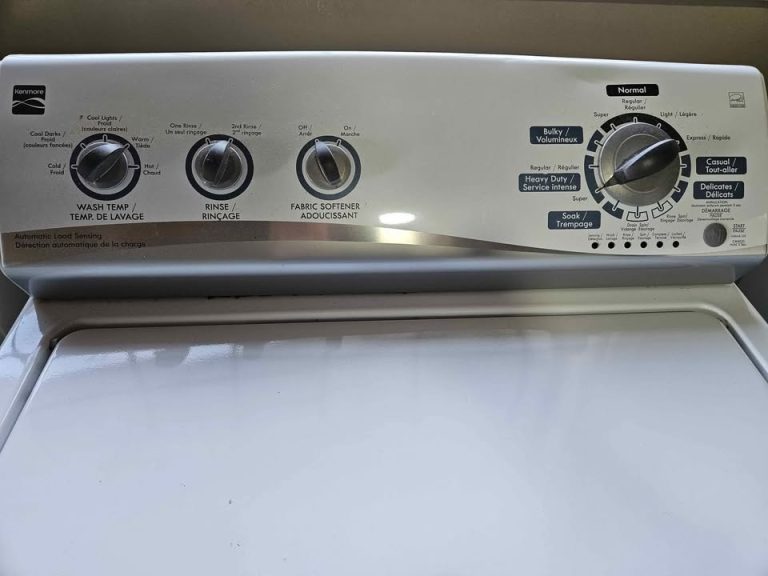Discover how to locate and maintain the essential filter in your Kenmore washing machine. This component plays a crucial role in preventing lint and debris from clogging your machine’s pump and drainage system, ensuring optimal performance.
Depending on your Kenmore model, the filter’s location can vary. Top-load and front-load machines each have distinct configurations. Experts recommend checking your model’s specifications and avoiding forced insertion of any parts.
Regular cleaning is vital to prevent clogs and maintain proper water drainage. This section will guide you through understanding where to find and how to care for your filter, setting the stage for effective maintenance.
By following these steps, you’ll be able to keep your washing machine running smoothly and extend its lifespan. Let’s dive in and explore the best practices for locating and maintaining your filter.
Understanding Your Washer Filter
Learning about your washer’s filter is the first step in maintaining your appliance’s performance. This essential part traps lint, hair, and debris, preventing clogs in the pump and drain system. A clogged filter can slow down water drainage and reduce washing efficiency.
The Role of the Washer Filter in Appliance Performance
The filter acts as a guardian for your washing machine, ensuring lint and debris don’t disrupt its operation. Regular cleaning is crucial to maintain optimal performance and extend the machine’s lifespan. A well-maintained filter keeps the pump and drain free from clogs.
Different Types of Filters and Their Benefits
| Feature | Removable Filter | Mesh Lint Trap |
|---|---|---|
| Cleaning | Easily removed and cleaned | Requires disassembly |
| Maintenance | Low maintenance | Higher maintenance |
| Efficiency | High efficiency | Less efficient |
Understanding your filter type empowers you to maintain your washer effectively. Regular maintenance ensures your appliance runs smoothly and prolongs its lifespan. Keep your washer in top shape by checking and cleaning the filter regularly.
Old Kenmore Washer Filter Location
Finding the filter in your Kenmore washing machine can be straightforward once you know where to look. The location varies depending on whether you have a top-load or front-load model.
Identifying Filter Placements in Kenmore Models
In top-load washers, the filter is often inside the center agitator or along the top rim of the tub. For front-load models, it’s usually accessible from a hatch on the front or near the drainage hose. Knowing your machine’s model helps narrow down the exact spot.
Comparing Top-Load and Front-Load Configurations
Top-load designs may require you to remove the agitator, while front-loaders often need you to unscrew a panel. Always check your user manual for specific guidance. Safety first—ensure the machine is off before starting your search.
Understanding where your filter is located makes maintenance easier and helps prevent damage. Follow trusted guides to avoid forcing parts and keep your appliance running smoothly.
Accessing and Cleaning Your Filter
Keeping your washing machine in top shape starts with regular filter maintenance. This section will guide you through the process of accessing and cleaning your filter effectively.
Safety Precautions and Preparation Steps
Before you begin, always unplug your washing machine to ensure your safety. Lay down a towel or place a bucket under the drain to catch any water that might spill out. This preparation will make the cleaning process much smoother.
A Step-by-Step Guide to Removing the Filter
For top-load models, you’ll typically find the filter inside the center agitator or along the top rim of the tub. Front-load models usually have the filter behind a hatch on the front or near the drainage hose. Gently remove the filter, following your manufacturer’s instructions to avoid damaging the pump or other parts.
Cleaning Techniques for Optimal Functionality
Cleaning your filter is straightforward. Soak removable filters in soapy water or gently brush secured ones to remove lint and debris. Don’t forget to clean the rubber seal and filter cavity for optimal performance. After cleaning, reinstall all parts correctly and run an empty hot wash cycle to rinse everything thoroughly.
Cleaning your filter every three months can prevent repair issues and ensure efficient drainage. By following these steps, you’ll prolong your washing machine’s life and keep it running smoothly. Regular maintenance is key to avoiding clogs and potential pump or drain complications.
Conclusion
Regular maintenance of your washing machine’s filter is key to ensuring optimal performance and extending its lifespan. By understanding where your filter is located and keeping it clean, you can prevent issues like lint buildup and poor water drainage.
Knowing your machine’s specific configuration, whether it’s a top-load or front-load model, helps you tackle maintenance effectively. Always follow the step-by-step cleaning guide and safety precautions to avoid damaging your machine.
Make cleaning a routine part of your washer care to prevent costly repairs. Clearing lint and debris not only boosts performance but also prolongs your machine’s life. Both top-load and front-load models require different approaches, so it’s important to tailor your cleaning method.
Thank you for reading this guide! Refer back whenever you need a refresher on proper filter maintenance. Regular upkeep ensures hassle-free washing and a healthier machine for years to come.
FAQ
How do I find the filter in my washing machine?
Why is it important to clean the pump filter regularly?
How often should I clean the filter in my washer?
Can I access the filter without professional help?
What happens if I don’t clean the lint from the filter?
How do I replace the filter if it’s damaged?
Can I use a hose to clean the filter?
How do I know if the filter is clogged?
Is it necessary to clean the filter after every use?
Related Articles:

